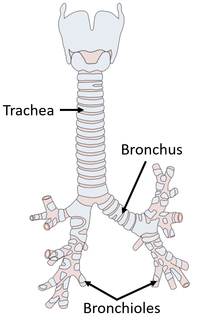Trachea
Contents
Key Stage 3
Meaning

A diagram showing the trachea.
The trachea is a tube connecting the mouth to the lungs.
Adaptations of the Trachea
- The trachea is covered in cartilage to stop it from closing when the lungs take in Oxygen.
- The trachea contains specialsed cells which release mucus in order to trap micro-organisms and dust to prevent them entering the lungs.
- The inner lining of the trachea is covered in ciliated epithelial cells to sweep the mucus up away from the lungs.
About the Trachea
Key Stage 4
Meaning

A diagram showing the trachea.
The trachea is a cartilage covered tube connecting the mouth to the lungs.
Adaptations of the Trachea
- The trachea is covered in cartilage to stop it from closing when the lungs take in Oxygen.
- The trachea contains specialsed cells which release mucus in order to trap micro-organisms and dust to prevent them entering the lungs.
- The inner lining of the trachea is covered in ciliated epithelial cells to sweep the mucus up away from the lungs.
About the Trachea
References
AQA
- Trachea, page 29, GCSE Combined Science; The Revision Guide, CGP, AQA
- Trachea, page 33, GCSE Biology; The Revision Guide, CGP, AQA
- Trachea, page 70, GCSE Combined Science Trilogy; Biology, CGP, AQA
- Trachea, page 76, GCSE Biology, CGP, AQA
- Trachea, pages 106-7, 118-9, 148, GCSE Biology; Student Book, Collins, AQA